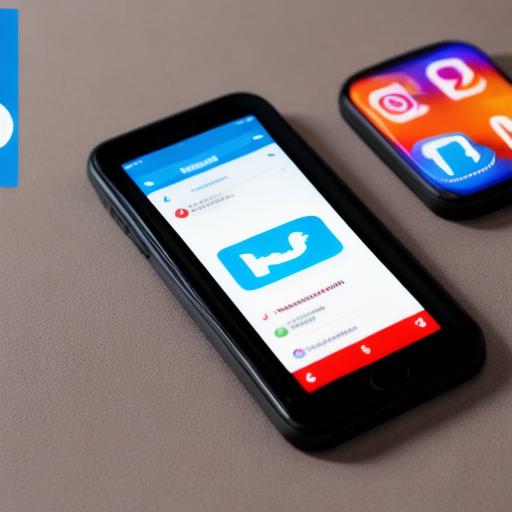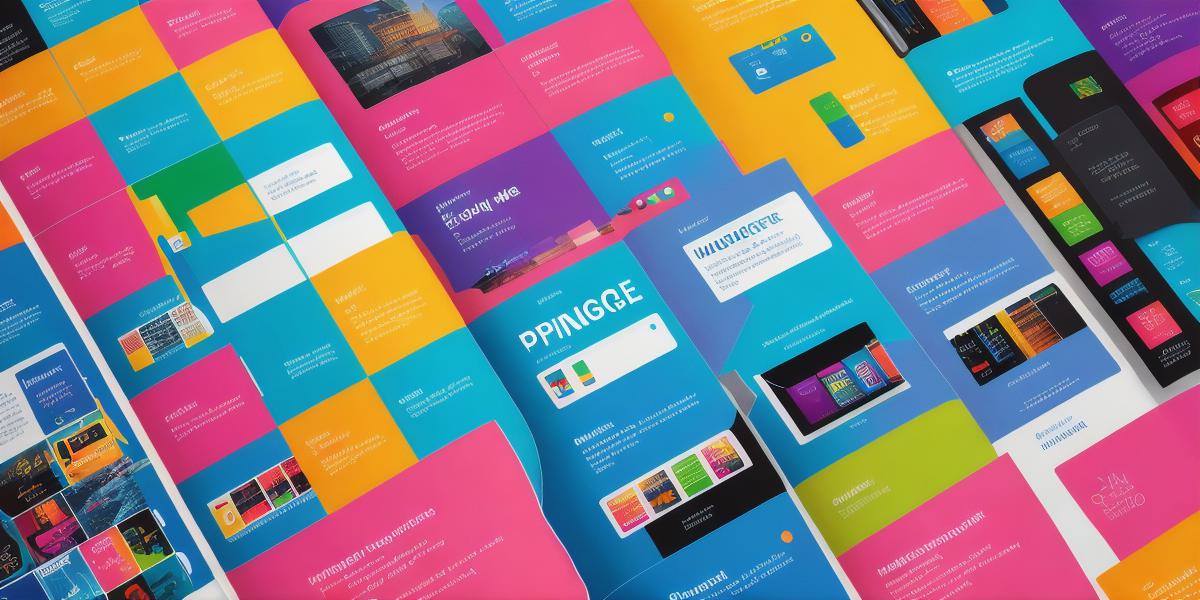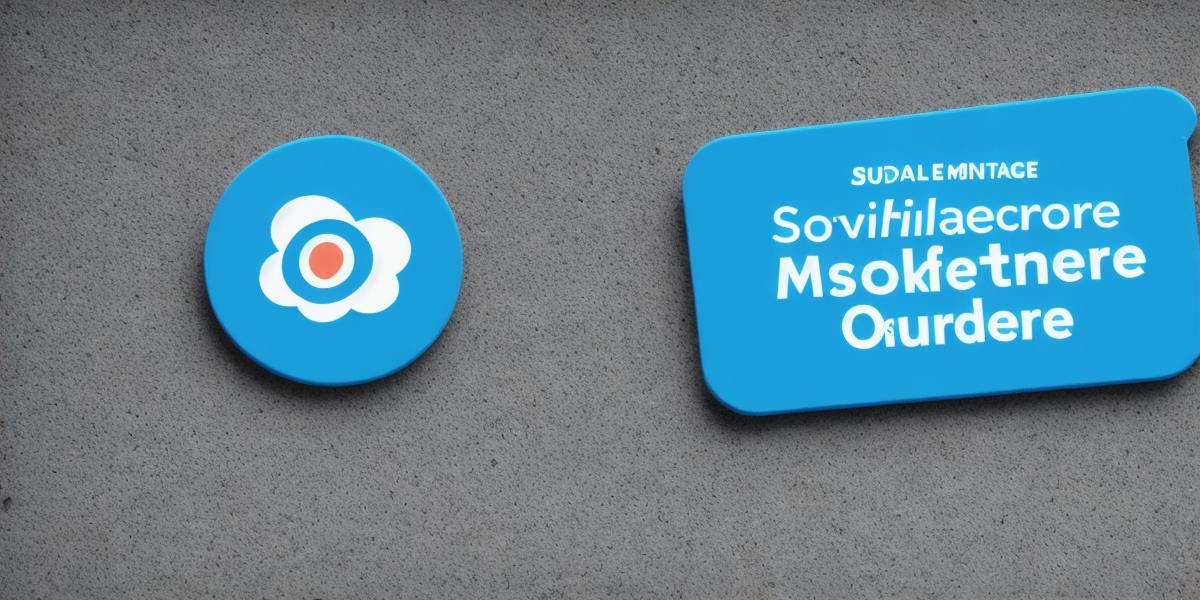As a marketer, you know that effective advertising tools are essential to any successful marketing strategy. With so many options available, it can be overwhelming to determine which ones will provide the most engagement and impact. In this article, we’ll explore some of the most effective advertising tools for maximum engagement and impact.

1. Social Media Advertising
Social media platforms such as Facebook, Instagram, Twitter, and LinkedIn offer a wide range of advertising tools to help you reach your target audience. These platforms allow you to target specific demographics, interests, and behaviors, making it easier for you to reach the right people. Here are some examples of social media advertising:
a) Promoted Posts – A promoted post is an organic post that has been boosted with paid money to increase its reach. This can be done on any social media platform, but Facebook and Instagram are popular choices.
b) Sponsored Influencer Content – Partnering with influencers on social media platforms can be a great way to reach new audiences. You can pay influencers to create sponsored content, which will be seen by their followers.
c) Video Advertising – Video is an effective way to engage your audience and get your message across. Social media platforms such as Facebook, Instagram, and YouTube offer a wide range of video advertising options.
d) Retargeting – Retargeting allows you to show ads to people who have previously visited your website or interacted with your brand in some way. This can be done on any social media platform.
2. Search Engine Advertising (SEA)
Search engine advertising is a form of paid advertising that appears at the top of search results on search engines such as Google, Bing, and Yahoo. SEA allows you to target specific keywords, which are phrases or sentences people use when searching for something online. Here are some examples of SEA:
a) Google Ads – This is the most popular form of SEA and can be used on Google, Bing, and other search engines. You can target specific keywords, locations, and devices, making it easier to reach your target audience.
b) Bing Ads – Bing Ads is a paid advertising platform that allows you to advertise on Bing search results, as well as on social media platforms such as Facebook and Twitter.
c) Remarketing – Remarketing allows you to show ads to people who have previously visited your website or interacted with your brand in some way. This can be done through SEA by targeting specific keywords.
3. Email Marketing
Email marketing is a highly effective advertising tool that allows you to reach out to people directly with personalized messages. Here are some examples of email marketing:
a) Building an Email List – You need a list of email addresses to send your emails to. This can be done through website sign-ups, pop-up forms, and other lead generation tactics.
b) Personalized Emails – Customizing your emails with the recipient’s name, interests, or other data can increase engagement rates significantly.

c) A/B Testing – A/B testing allows you to test different email subject lines, content, and calls-to-action to see what works best.
d) Email Automation – Setting up automated emails can help you save time and improve engagement rates by sending timely and relevant messages to your subscribers.
4. Content Marketing
Content marketing is a form of advertising that focuses on creating valuable, educational content to attract and retain customers. Here are some examples of content marketing:
a) Blogging – Writing blog posts can help you establish yourself as an authority in your industry and attract new visitors to your website.
b) Video Content – Videos can be a great way to engage your audience and get your message across. You can create explainer videos, product demos, or other types of video content to showcase your brand.
c) Infographics – Infographics are visual representations of data that can help you communicate complex ideas in an easy-to-understand format.
d) Guest Blogging – Writing guest blog posts for other websites can help you reach new audiences and establish yourself as an expert in your industry.
5. Influencer Marketing
Influencer marketing involves partnering with people who have a large following on social media or other platforms to promote your brand. Here are some examples of influencer marketing:
a) Sponsored Posts – A sponsored post is an organic post that has been boosted with paid money to increase its reach. Influencers can be paid to create sponsored posts about your brand.
b) Giveaways – Offering a giveaway in conjunction with an influencer can help you reach new audiences and generate excitement about your brand.
c) Product Reviews – Influencers can review your product and share their thoughts with their followers, which can help increase sales.
d) Sponsored Events – Partnering with an influencer to sponsor an event can be a great way to get your brand in front of new audiences.
6. Affiliate Marketing
Affiliate marketing involves partnering with other businesses or individuals to promote your products and pay them a commission for each sale they generate. Here are some examples of affiliate marketing:
a) Commission-Based Affiliate Programs – This is the most common type of affiliate program, where affiliates earn a commission for each sale they generate.
b) Performance-Based Affiliate Programs – In this type of program, affiliates earn commissions based on specific performance metrics such as clicks or leads generated.
c) Blogging and Content Marketing – Bloggers and content marketers can promote your products and earn commissions through affiliate marketing programs.
d) Email Marketing – You can also promote affiliate products to your email subscribers and earn commissions for each sale generated through your unique affiliate link.
7. Direct Mail Advertising
Direct mail advertising involves sending physical mail, such as brochures or postcards, to a specific address or group of addresses. Here are some examples of direct mail advertising:
a) Targeted Mailing Lists – You can purchase targeted mailing lists that include people who have a specific interest or demographic, which can help you reach the right people with your message.
b) Personalized Messages – Customizing your mail pieces with personalized messages and data can increase engagement rates significantly.
c) Testing and Optimization – Direct mail advertising allows you to test different messages, designs, and calls-to-action to see what works best.
d) Tracking Results – You can track the success of your direct mail campaigns by measuring response rates and other metrics.
FAQs
Q: What is the most effective advertising tool?
A: The most effective advertising tool will depend on your specific goals and target audience. Social media advertising, search engine advertising, email marketing, content marketing, influencer marketing, affiliate marketing, and direct mail advertising are all highly effective tools that can be customized to meet your needs.
Q: How do I know which advertising tool to use?
A: To determine which advertising tool to use, you need to understand your target audience and what they respond to best. For example, if you’re targeting younger people who spend a lot of time on social media, social media advertising might be the best option. If you’re trying to reach people who are actively searching for products or services, search engine advertising might be more effective.
Q: How much should I budget for my advertising campaign?
A: Your budget will depend on your goals and what you hope to achieve with your advertising campaign. It’s important to allocate enough funds to get the results you want, but not so much that you’re overspending or wasting money. You can use tools like Google Adwords or social media advertising platforms to determine how much you should budget for each type of advertising.
Q: What are some common mistakes people make when creating an advertising campaign?
A: Common mistakes include not defining your target audience, using irrelevant messaging or calls-to-action, and failing to measure results or optimize your campaigns. It’s important to do your research, create targeted messages that resonate with your audience, and track your results to ensure you’re getting the most out of your advertising budget.




